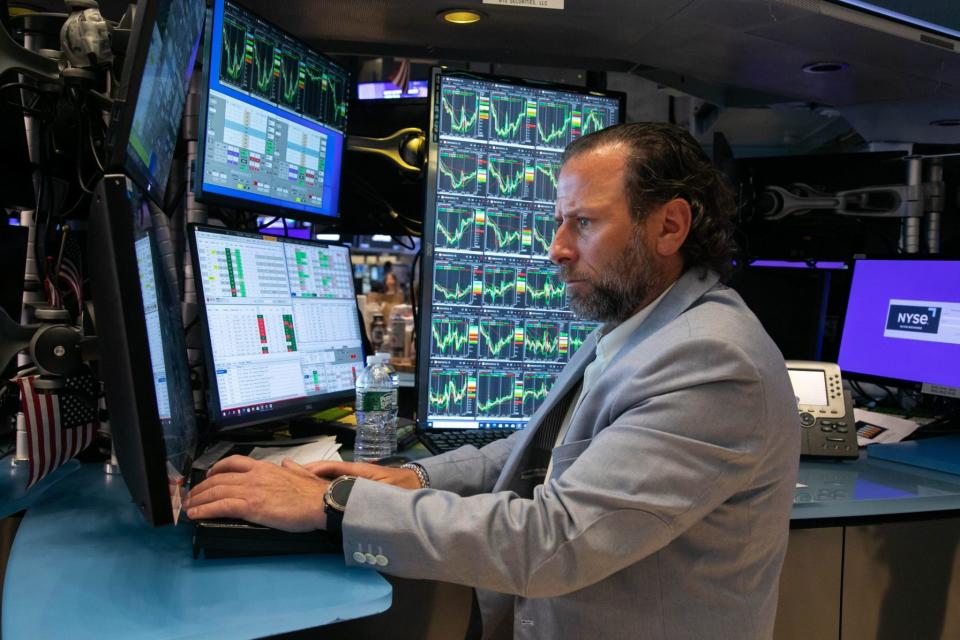Why experts aren’t panicking about the latest jump in producer price inflation

After three hot inflation reports helped push back the timing of the Federal Reserve’s long-anticipated interest rate cuts in the first quarter, investors were hoping to see signs of cooling producer prices this week. Instead, ahead of Wednesday’s all-important consumer price index reading, markets got a warning sign.
The producer price index, a measure of the prices manufacturers and service providers receive for the goods they sell, jumped 0.5% in April, topping the consensus 0.3% forecast, the Bureau of Labor Statistics reported Tuesday. However, because March’s figures were revised from an 0.2% gain to an 0.1% decline, things might not be as bad as they seem.
As Capital Economics’ chief North America economist Paul Ashworth explained in a Tuesday note, the “bigger-than-expected” jump in producer price inflation in April was “mainly due to downward revisions to earlier months.” As a result, year-over-year producer price inflation accelerated only slightly from 2.1% in March to 2.2% last month.
Ashworth also noted the slight rise in the annual rate of producer price inflation for goods was largely the result of a 5.4% increase in gas prices. And with crude oil prices falling recently, he argues that trend “should be more than reversed in May.”
However, Ashworth noted rising producer price inflation can impact one key part of the Fed’s favorite inflation gauge: the core personal consumption expenditures (PCE) price index.
“PPI can have a particularly big impact on core services excluding housing, aka supercore. In that respect, April’s news was mixed but, on balance, encouraging,” he wrote.
While goods prices jumped 0.4% in April, it was the 0.6% jump in services prices that accounted for three-fourths of the headline gain in producer price index. Services inflation hit its highest level since July 2023 last month. However, a huge 3.9% monthly jump in portfolio management service costs caused much of the increase in services inflation.
For Greg Daco, chief economist at EY, that means there is “no reason to be alarmed.”
“Strong stock market performance drove part of the gains,” he wrote on X, referencing the jump in portfolio management service costs. “But airfares [were] down sharply, auto insurance [was] flat, and general consumer goods markups [were] down.”
It’s the long-forecast, bumpy last mile of the Fed’s inflation fight
For years now, Fed chair Jerome Powell has warned the path to taming inflation will be “bumpy,” and economists have cautioned the “last mile” of the Fed’s inflation fight will be the most difficult. Now, those forecasts are proving prescient after multiple hot inflation reports in 2024.
For Quincy Krosby, chief global strategist at LPL Financial, the latest producer price inflation report is yet another sign that investors anticipating near-term interest rate cuts may be overly optimistic amid the difficult final battle with inflation. “Once again, the probability for interest rate cuts have been slowed as the Fed's timetable to initiate a rate easing cycle is thwarted by stubbornly higher prices,” she told Fortune via email.
Still, investors mostly brushed off the higher-than-forecasted inflation reading. The Dow Jones Industrial Average was essentially flat by midday Tuesday, while the S&P 500, and the tech-heavy Nasdaq Composite were in the green, if only slightly.
Scott Helfstein, SVP and head of investment strategy at Global X, argued this muted investor reaction is the result of inflation and Fed policy becoming less important than economic growth and earnings in recent months.
"Companies have adjusted to the new reality of higher prices and continue to look for technology solutions to manage for profit,” he told Fortune via email. “The last mile on inflation was always going to be the hardest, but we should be comfortable with these numbers.”
And David Russell, global head of market strategy at TradeStation, also noted that, despite the slight rise in producer price inflation, the Fed doesn’t want to cause more economic pain than necessary by holding interest rates too high for too long. “Investors know the Fed wants to be done hiking rates, so today’s PPI report might end up as little more than background noise. It doesn’t change the narrative, at least not yet,” he told Fortune via email.
All eyes are on the consumer price index
April’s producer price inflation report wasn’t great news for the economy or markets, but it’s also not a huge cause for concern for most experts. However, if Wednesday’s consumer price index, which measures inflation for average Americans, comes in higher than expected, that’s a different story.
“Right or wrong, the CPI tends to have a bigger short-term impact on the markets, so the picture could look much different 24 hours from now,” Chris Larkin, managing director of trading and investing at E*TRADE from Morgan Stanley, explained. “If the CPI also comes in above expectations, the interest rate picture may be thrown into doubt…more hot inflation data could make the debate about whether 2024 will contain even a single cut.”
Chris Zaccarelli, chief investment officer at Independent Advisor Alliance, backed up that idea, arguing the “most important data release is tomorrow’s CPI print.”
“Today’s PPI is a bad omen for tomorrow’s CPI number – despite the relationship between the two being somewhat complicated – and if the market is spooked by today’s higher-than-expected PPI number, then it will be even more disturbed by a higher-than-expected CPI number tomorrow,” he told Fortune via email.
Still, like Global X’s Helfstein, Zaccarelli argued the stock market can still perform throughout the year due to strong corporate profits and steady consumer spending—even if there may be a bit of volatility and “the inflation data is going to keep the Fed on edge.”
This story was originally featured on Fortune.com

 Yahoo Finance
Yahoo Finance 